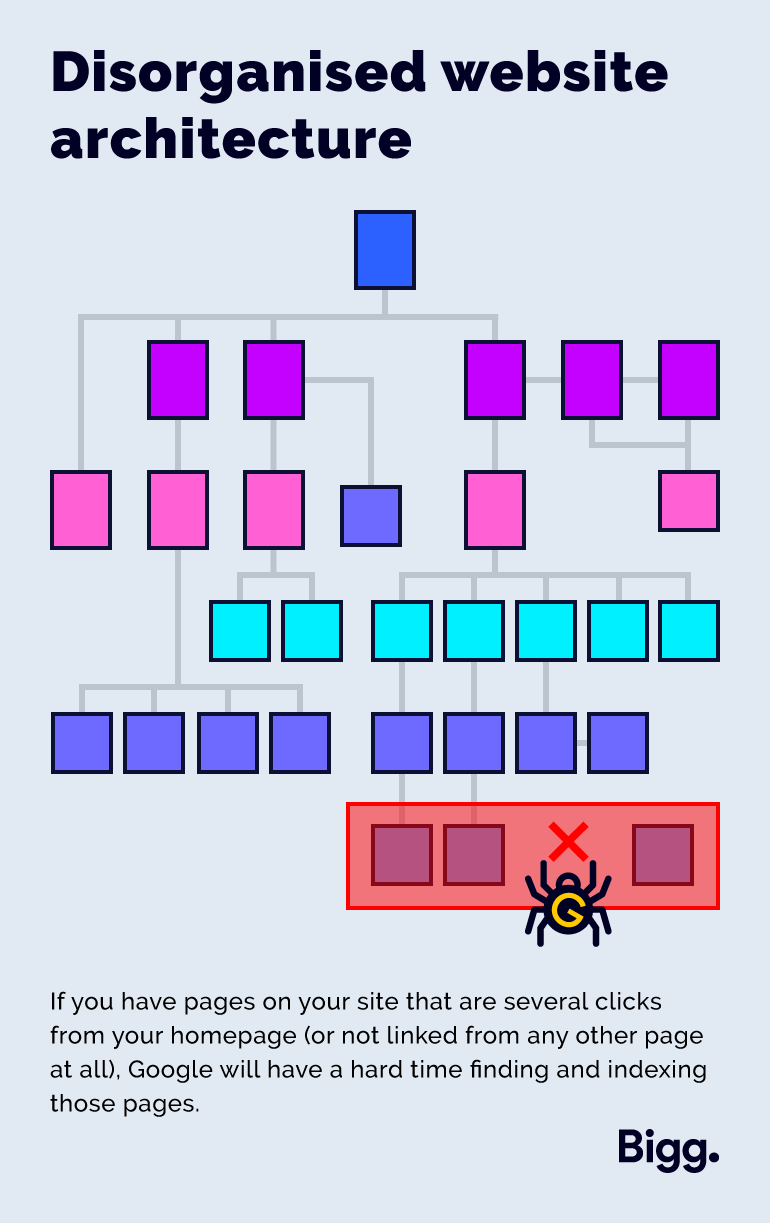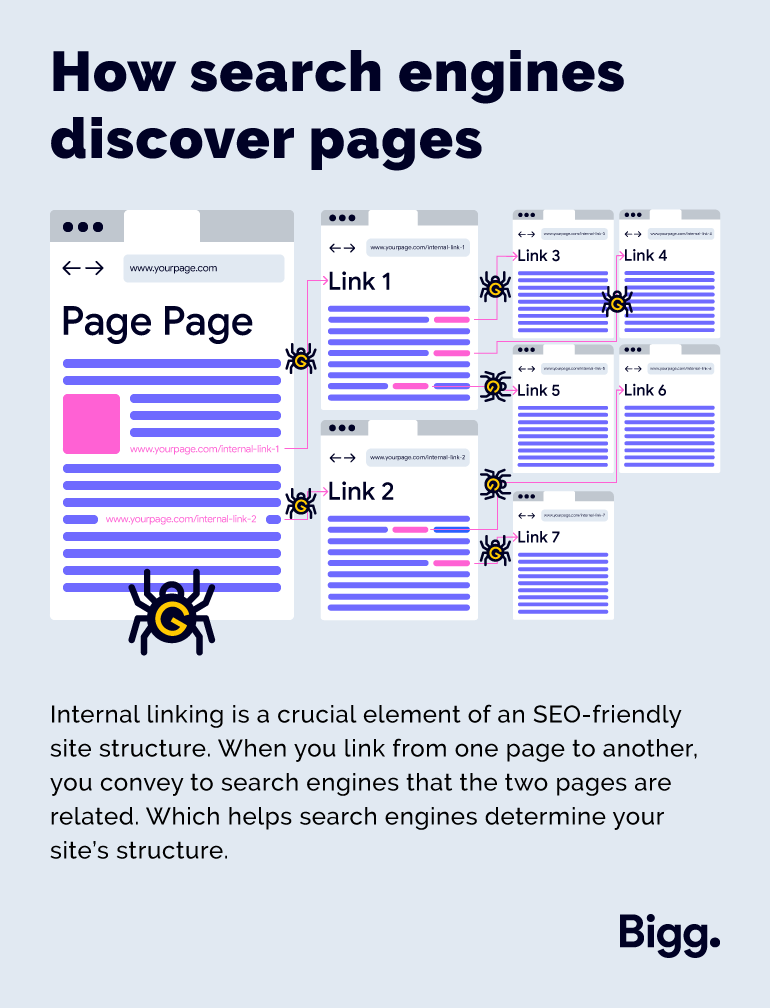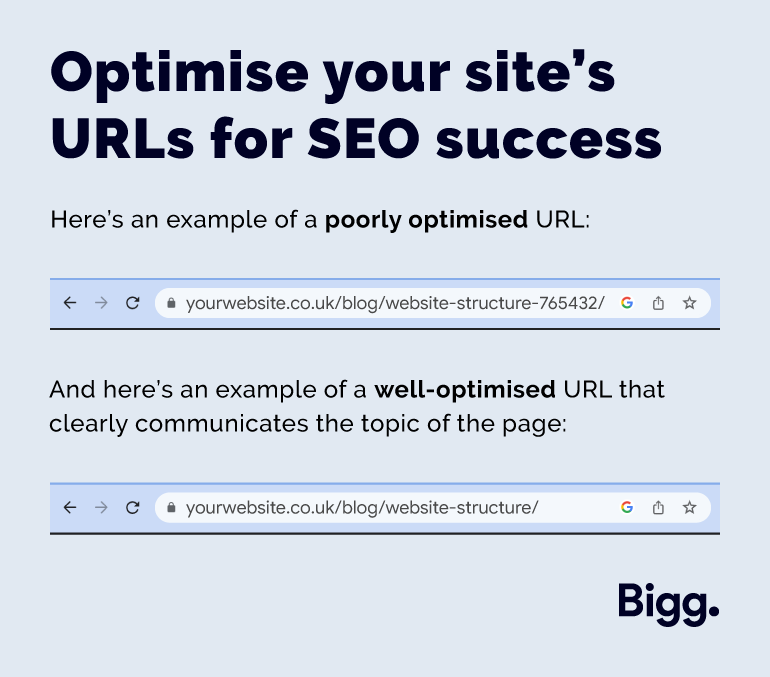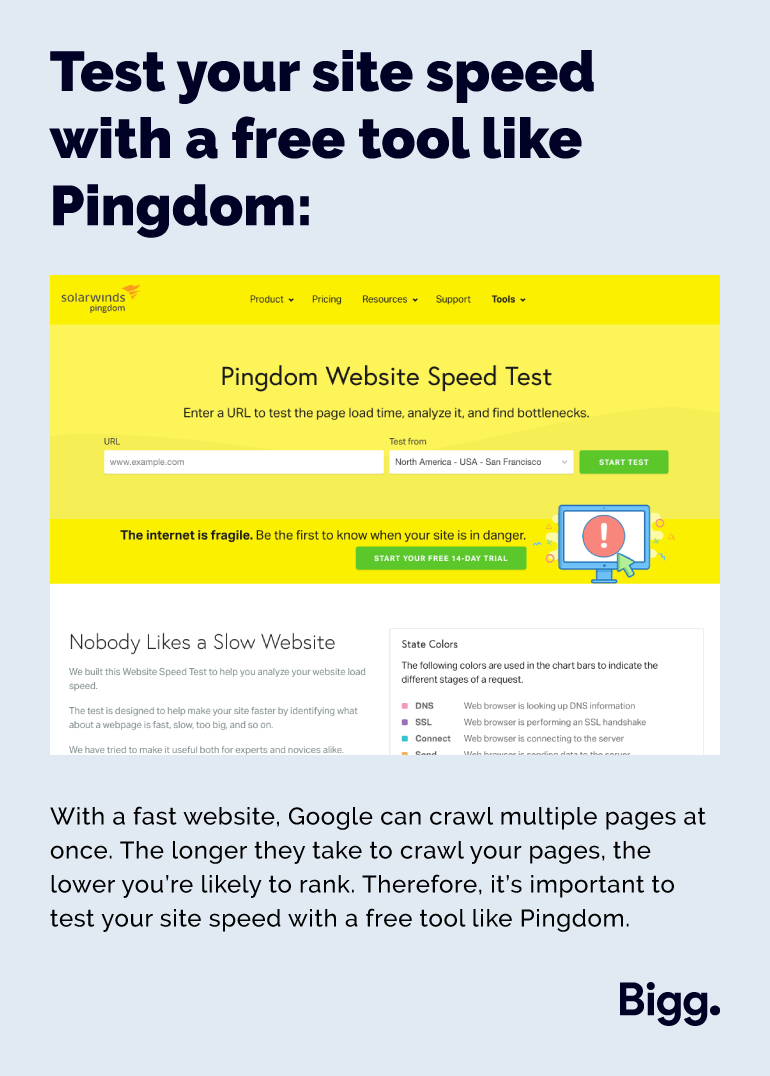How to Create an SEO-Friendly Site Structure
If you’re preparing to launch a new site or would even just like to improve your existing one, there’s no understating the importance of creating a solid website structure from the get-go.
While this can seem like a daunting task, it is certainly one worth donating time and effort to. After all, the more organised and logical your site structure, the more likely you are to see great results in terms of user experience (UX) and search engine rankings.
In this helpful guide from our search engine optimisation (SEO) experts, you’ll learn exactly what “website structure” means, why it is so important for SEO, and how to achieve the ideal structure for your website. Let’s get started!
Understanding Website Structure
Before you can really understand how best to structure your website, you’ll need to get to grips with the basics of what “website structure” actually means and why it is so important for SEO.
What is Website Structure?
Website structure, sometimes referred to as site architecture or information architecture, is essentially the way in which a website’s content is organised, categorised and interconnected. It defines how the various parts of a website fit together to create a coherent and logical framework that is easy for its users to understand and operate.
A well-designed website doesn’t just benefit users, though – it also makes it easier for search engines to navigate through and understand a website’s pages and content. This means that websites with a clear and SEO-friendly structure tend to perform better in search engine results, leading to increased organic traffic and visibility.
Here is a simple example of how a website can be structured in line with best practices:
Key Components of a Website’s Structure
A website’s structure consists of various key components designed to help organise and present content in an easy-to-use and logical way. These significantly affect how both human users and search engines navigate their way through a website, so it’s important to get them right. Here are just a few of the essential elements:
Navigation Bar
Hierarchy
URL Structure
Categories and Tags
Breadcrumbs
Sitemaps
Internal Links
To learn more about what these components do, why they’re important and how to perfect them, keep reading!
The Importance of Website Structure for SEO
There are three main reasons why website structure is an important part of SEO.
The first and most obvious reason is that a well-planned structure hugely improves user experience. In fact, according to this report by CareerFoundry, 88% of online consumers claim that they’re less likely to return to a site that was confusing and difficult to navigate. By ensuring that your site provides a positive experience for users, you increase the chances that they will return to your site and maybe even become loyal customers.
A good site structure also makes it easy for search engines to crawl and index your site, which is the first step to ranking well in search engine results pages (SERPs). If the structure of your site doesn’t make sense, search engines might struggle to understand the purpose of individual pages and be unable to determine when and where they should appear in SERPs.
Lastly, by structuring your site well, you can ensure that similar pieces of content are distinguishable from one another and don’t compete with each other in SERPs. This is because users and crawl bots will be able to better understand how your site is organised and the intention behind each individual piece of content on it.
Best Practices for an SEO-Friendly Site Structure
In order to achieve an organised, logical and easy-to-understand site structure, you’ll need to follow a few SEO best practices. Let’s take a look at some of the key strategies to consider when designing and developing your site structure:
Plan, Plan, Plan
Before you actually start building your website, it’s vital that you take the time to plan how it will be structured. This involves organising your content logically and establishing how different pages and sections of your site relate to one another. Here are some of our pro tips to get you started:
Define Clear Categories and Subcategories – Break down your content into clear, well-defined categories and subcategories. For instance, if you run an online makeup store, your categories may be ‘Face’ and ‘Eyes’, while your subcategories could be ‘Foundations’, ‘Primers’, ‘Eyeliners’ and ‘Mascaras’.
Use Keyword Research – Conduct keyword research to identify relevant keywords and phrases that your target audience is searching for. These keywords should then be incorporated into your chosen categories and subcategories in a way that is appropriate for your content and audience.
Create a Hierarchical Structure – Develop a hierarchical structure, with the Homepage at the top, followed by primary categories, subcategories, and individual content pages. This will provide a clear path for users and search engines to follow.
Internal Links
As mentioned, internal linking is a crucial element of an SEO-friendly site structure, as they are what connects one page of your site to another. They serve several purposes, both for SEO and UX; to maximise results on both fronts, follow these tips:
Distribute Link Authority – Internal links help to distribute link authority throughout your website, which can help boost the search engine ranking of the linked page.
Use Descriptive Anchor Text – The text you use to link between pages (anchor text) should be descriptive and relevant to the content you’re linking to. Avoid generic phrases like “click here”.
Prioritise Important Pages – Add internal links to high-traffic and high-authority pages to direct users toward other important content, such as product pages, cornerstone blogs, or landing pages.
Create Contextual Links – Link naturally within your content, making sure the link’s context fits seamlessly with the topic. This provides maximum value to users and encourages them to actually click on the links.
Avoid Orphan Pages – Pages that don’t have any links pointing at them are called orphan pages. It’s important to avoid this, as search engines navigate through a site via its links , meaning any pages that aren’t linked will be very difficult for them to access and therefore are unlikely to rank.
Here is a diagram of how search engines discover pages to help you visualise how your site should be structured for SEO:
User-Friendly Navigation
An essential aspect of an SEO-friendly website structure is user-friendly navigation. Users should be able to easily find what they are looking for without getting lost, confused or frustrated. To achieve this, you need:
Intuitive Menu Design – Create navigation menus that are clear, intuitive, and prominently displayed. Menu items should have descriptive labels, and you should try to avoid complex dropdown menus if possible.
Limited Depth – Keep your navigation menus relatively shallow. In other words, users should be able to reach their desired destination within just a few clicks. Not only does this improve UX but also makes it easy for search engines to index your site content.
Optimised URLs
SEO-friendly URLs should be descriptive, contain keywords, and make it easier for search engines to understand a page’s content. Steer clear of URLs with excessive parameters or symbols (e.g. “?id=8375z”), as these can be confusing for users and unappealing to search engines. Opt instead for clear and descriptive URLs that contain target keywords, such as “website.com/site-structure-how-to-guide”.
Mobile Responsiveness
As mentioned earlier, it’s important to ensure your site structure is mobile-friendly given that so many people now access websites on the go. This involves implementing a web design that adapts to different screen sizes and devices. Responsive sites tend to be prioritised by search engines, so this is a crucial step for achieving an SEO-friendly site structure.
Duplicate Content
Duplicate content can confuse search engines and limit the success of your SEO efforts. Ensure your site structure prevents duplicate content by implementing:
Canonical Tags – If you have similar content accessible through multiple URLs, you can use these to specify the preferred version of a page.
301 Redirects – You can redirect duplicate or outdated URLs to the correct page through 301 Redirects, consolidating ranking value and preventing duplicate content in the process.
Page Speed and Performance
Page speed is a crucial element of SEO and UX, so it’s important not to overlook it. Optimise your site structure for fast loading times by
Compressing images to reduce load times
Minimising HTML, CSS and Javascript files to reduce rendering times, and
Using Content Delivery Networks to distribute your site’s content across multiple servers.
Analytics and Monitoring
Our final pro tip for ensuring an effective site structure is to regularly monitor your website’s performance and your users’ behaviour using analytics tools like Google Analytics. The data provided by such tools can help to identify issues, opportunities and areas for improvement, which will subsequently offer both SEO and UX benefits.
Create a Site Structure That Succeeds With Bigg
As you’re now well aware, website structure has a huge impact on the success of your SEO efforts and plays an important role in UX too. It also directly affects how much traffic your site receives and your overall online success, so it’s certainly worth going the extra mile to get it right.
Ready to elevate your website’s performance and conquer the world of SEO? Choose Bigg as your trusted digital marketing partner, and let us transform your online presence with our wealth of SEO experience and knowledge.
At Bigg, we understand the vital role that an SEO-friendly site structure plays in driving traffic, improving user experience, and achieving higher search engine rankings. With years of expertise in the digital marketing landscape, we’re well-equipped to help you craft the perfect site structure that aligns with your business goals and objectives.
Don’t miss the opportunity to unlock your website’s full potential. Contact us today to get started on your journey to SEO success with Bigg. Your ideal site structure is just a click away!





